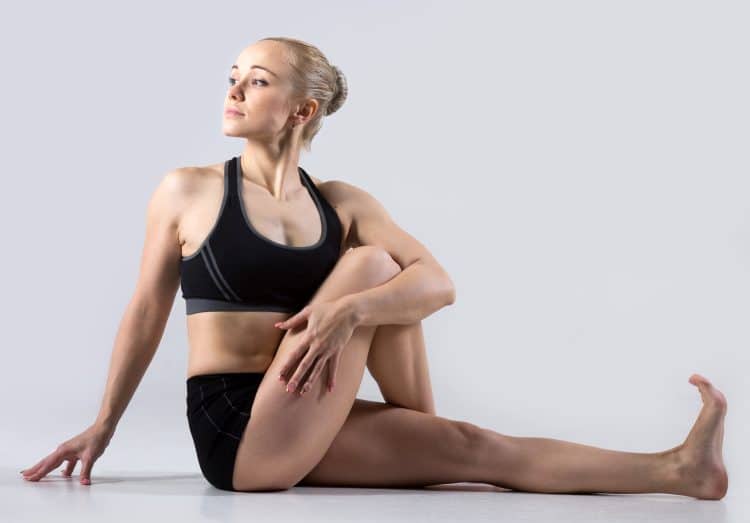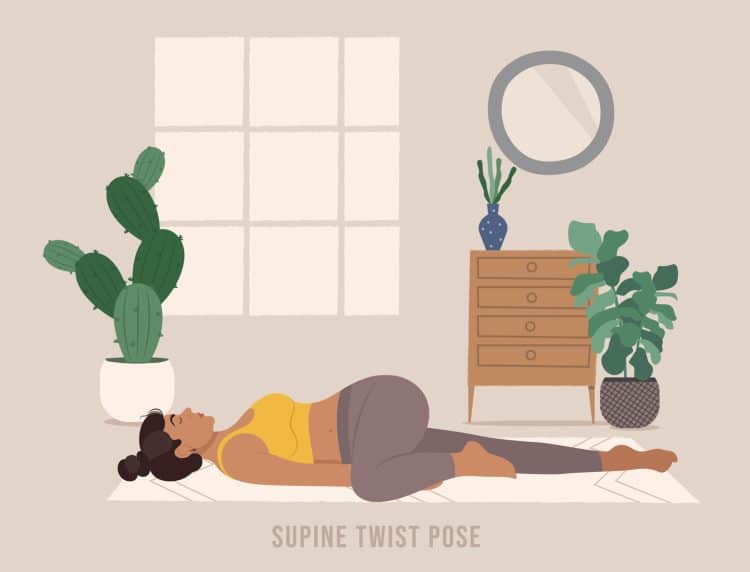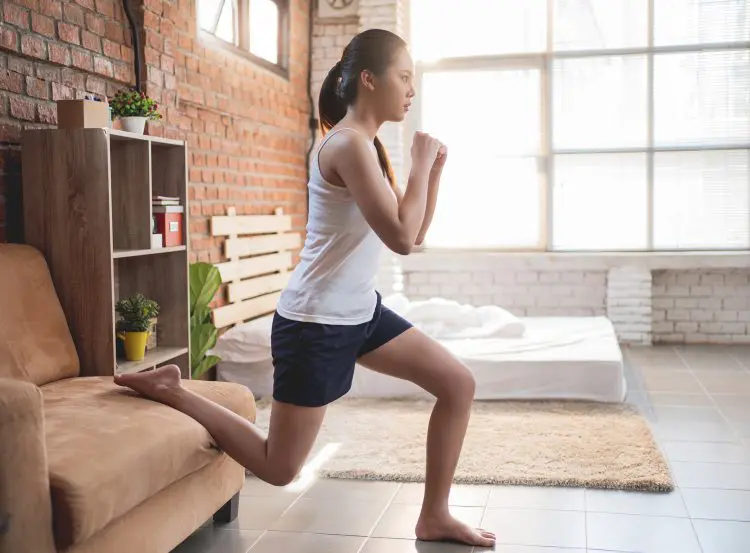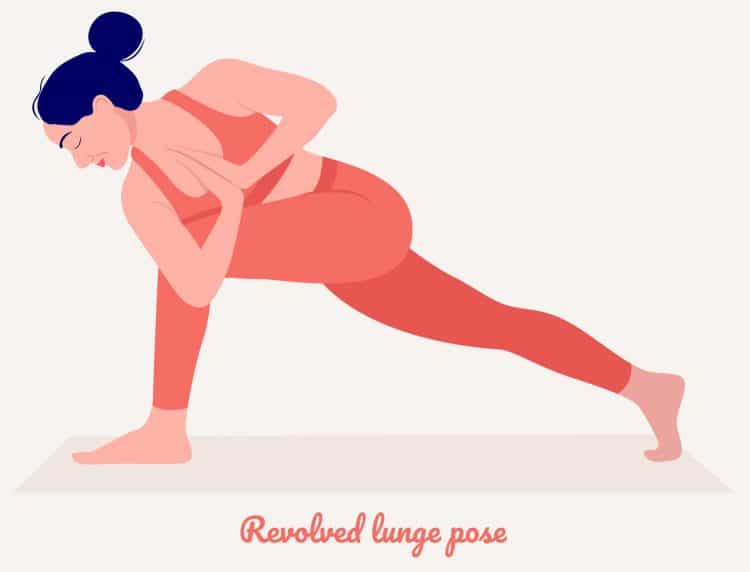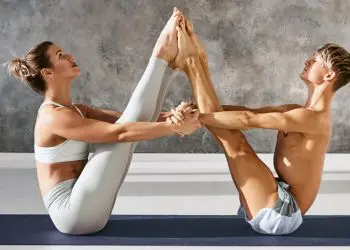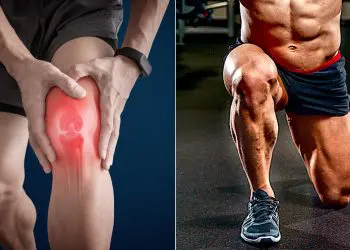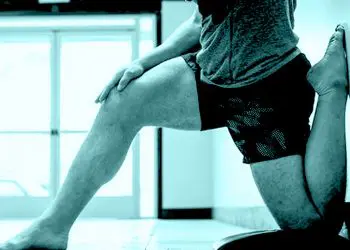A large and growing percentage of the world’s population is sedentary. We earn a living sitting at a desk, spend our leisure time sitting on a sofa, travel from place to place sat in cars, and even exercise sat down, too.
All this sitting can have an adverse effect on many aspects of your health. Prolonged sitting is linked to weight gain, an increased risk of cancer and coronary heart disease, and numerous joint as muscle dysfunctions, including poor posture and lower back pain (1).
Exercise can and does help offset some of the damaging effects of sedentarism. Still, even if you work out regularly, all that sitting can leave you tight and immobile.
The scorpion stretch is an all-in-one solution to many of the flexibility and mobility issues caused by prolonged sitting. In this guide, we reveal how to do this exercise and provide you with a few additional mobility and flexibility exercises to try.
Scorpion Stretch – Muscles Worked
Unlike a lot of stretches, the scorpion stretch doesn’t just target a single muscle. Instead, it stretches several muscle groups while mobilizing your hips and spine. The main muscles affected by the scorpion stretch are:
Hip flexors – located on the front of your hips, prolonged sitting can lead to chronic shortening of the hip flexors. Tight hip flexors are a leading cause of back pain and poor posture. The primary hip flexors are the iliacus, psoas major, and rectus femoris.
Level Up Your Fitness: Join our 💪 strong community in Fitness Volt Newsletter. Get daily inspiration, expert-backed workouts, nutrition tips, the latest in strength sports, and the support you need to reach your goals. Subscribe for free!
Quadriceps – known as the quads for short, these are the muscles on the front of your thighs responsible for knee extension. The four quad muscles are vastus lateralis, vastus medialis, vastus lateralis, and rectus femoris. That last muscle is not a typo; the rectus femoris is a knee extender AND a hip flexor.
Rectus abdominis and obliques – if you do a lot of abs training and spend much of your time hunched over a computer keyboard, you may have a tight rectus abdominus and obliques. The rectus abdominus is the long, flat muscle on the front of your abdomen, while your obliques are your waist muscles. Stretching these muscles will help free up your spine for increased lumbar mobility.
Chest and shoulders – during the scorpion stretch, your upper body remains still while you move your lower body. This provides your upper body with a mild but beneficial stretch. If they’re tight, you may feel the scorpion stretch in your chest and shoulders.
Gluteus maximus – while the scorpion stretch doesn’t extend your gluteus maximus, they are still engaged in this exercise. Prolonged sitting doesn’t just cause muscle tightness; it also makes some muscles weak, in particular the glutes. Doing the scorpion stretch won’t build bigger glutes, but it will wake them up encourages them to engage better. Your glutes are your main hip extenders and are basically your butt muscle.
Erector spinae – like the glutes, the scorpion stretch doesn’t lengthen your erector spinae, but it does engage this all-important muscle. Long periods of sitting can stretch and weaken the erector spinae, and the scorpion stretch is a useful antidote. The erector spinae are the muscles that run up either side of your back and are responsible for the extension of your spine.
How to Do the Scorpion Stretch
Get more from scorpion stretch while keeping your risk of injury to a minimum by following these guidelines. Before attempting this exercise, spend a few minutes warming up as muscles and joints are more pliable when warm.
- Lie prone (on your front) on an exercise mat with your legs straight and your arms outstretched to form the shape of a T. Rest your chin on the mat and look straight down so that your spine is neutral.
- Press your palms lightly into the floor and keep your upper body stationary throughout the exercise.
- Lift your right leg and bend your knee to roughly 90-degrees. Stretch your right leg across your left leg and try to touch the ground outside your left leg with your foot.
- Your hips and lower back will rotate as you move. However, your chest and shoulders should remain stationary.
- Hold this position while breathing slowly and evenly.
- Return to the starting position and swap sides.
- Don’t worry if you can’t touch your foot to the floor. Just stretch as far as you COMFORTABLY can. As your flexibility improves, gradually lower your foot closer to the floor. Work toward touching your foot to your outstretched hand.
There are two ways to do the scorpion stretch: dynamically or statically.
With the dynamic scorpion stretch, you move into the stretch, hold it for a couple of seconds, and then ease back into the starting position before swapping sides. Do five to ten reps on each side to mobilize your spine, open your hips, and wake up your glutes and lower back, for example, as part of your warm-up.
The static scorpion stretch involves moving into the stretch and holding it for 30 to 60 seconds before slowing returning to the starting position and swapping sides. Static stretches promote muscle relaxation while increasing flexibility. However, they aren’t as effective as dynamic stretches for joint mobility. Static stretches are best done as part of your cool-down.
Scorpion Stretch Benefits and Drawbacks
Not sure if you need to do the scorpion stretch? Check out these benefits:
Triple threat exercise – the scorpion stretch opens your hips, mobilizes your spine, and fires up your glutes and spinal erectors. This makes it a very time-efficient movement that you can use to prepare your body for exercise OR stretch and ease muscle tension during your cool-down. If you only have time for one stretch, the scorpion stretch is a good option.
An anti-sitting exercise – doing the scorpion stretch could help undo many of the harmful effects of prolonged sitting. It engages the muscles that sitting tends to weaken and stretches the muscles that sitting makes tight. If, like most people, you spend a lot of time sitting in a chair, this exercise is an excellent way to negate some of the unwanted side effects.
No equipment required – you can do this exercise anywhere you have space to lie down. Apart from an exercise mat (which is recommended but not compulsory), you don’t need any equipment to do the scorpion stretch. Do a set of scorpion stretches a couple of times a day to break up long periods sat at your desk.
While the scorpion stretch is mostly safe and beneficial, there are also a few drawbacks to consider:
Level Up Your Fitness: Join our 💪 strong community in Fitness Volt Newsletter. Get daily inspiration, expert-backed workouts, nutrition tips, the latest in strength sports, and the support you need to reach your goals. Subscribe for free!
A challenging exercise – make no mistake; if you spend long periods seated and have a tight lower back and hips, you will find this exercise difficult. Don’t get disheartened; be consistent, and gradually your flexibility and mobility will improve. However, you must not stretch too aggressively, as that could lead to back pain or a hip injury.
You may be better off stretching some muscles in isolation – the scorpion stretch is a good general exercise affecting several important muscles. However, if just one of those muscles is significantly tighter than the rest, this exercise won’t work as well as it could. Even after doing the scorpion stretch, you may still need to stretch your hip flexors separately if they are very tight.
7 Scorpion Stretch Variations and Alternatives
The scorpion stretch is very effective, but it’s not suitable for everyone. Nor should you do it all the time. The good news is that there are several variations and alternatives you can do instead:
1. Seated spinal twist
This exercise mobilizes your spine with gentle rotation, stretching your lower back, core, and shoulder muscles at the same time. Most of life’s activities occur in the sagittal plane, i.e., forward and backward. Twisting exercises like this one provide an escape from sagittal movements and stretch the muscles that are otherwise not used very often. However, unlike the scorpion stretch, this exercise doesn’t have much of an effect on your hips.
How to do it:
- Sit on the floor with both legs straight out in front of you.
- Bend your right leg and place your foot on the floor outside your left knee.
- Cross your left arm over your right knee and place your right hand on the floor behind you to support your spine.
- Rotate your head and shoulders to the right as far as you feel comfortable. Use your left arm to gently push you around a little further if required.
- Hold this position for a minute or so.
- Slowly unwind, swap sides, and repeat.
2. Supine twist
The supine twist is a gentle back stretching exercise that’s also very relaxing. If you find the scorpion stretch too challenging or just want a warm-up exercise to do before doing the scorpion stretch, give supine twists a try.
How to do it:
- Lie on your back with your legs straight and your arms out level with your shoulders to form a T shape.
- Bend your left leg and place your foot on the floor. Place your right hand on your left knee.
- Gently pull your leg over and down toward the floor. Try to keep your shoulders and left arm flat on the floor.
- Hold this position (but not your breath!) for 60 seconds or so, and then slowly swap sides.
3. Half-kneeling quadriceps and hip flexor stretch
This exercise stretches your quads and hip flexors just like the scorpion stretch but takes your lower back out of the equation. This is a good option if you want to concentrate on opening your hips and stretching your quads or find that deep rotations are uncomfortable.
How to do it:
- Step forward and bend your legs. Place your rear knee on the floor. Your front shin should be vertical.
- Reach back and pull your rear foot in toward your butt.
- Gently push your hips forward to stretch the hip flexor and quad on your rearmost leg.
- Take care not to hyperextend your spine. Instead, keep your lumbar spine and pelvis neutral.
- Hold for 30-60 seconds and then switch sides.
4. Couch stretch
If you’ve got reasonable hip flexor and quadriceps flexibility, you’ll probably be ready to take things further with the couch stretch. While this exercise does not involve spinal rotation, it’s pretty much unbeatable for opening the hips and stretching the quads.
Learn how to do the couch stretch in our in-depth guide.
5. Revolved lunge
The revolved lunge looks NOTHING like the scorpion stretch, and yet, it involves many of the same muscles, and shares most of the benefits. As an added advantage, you do this exercise standing, so it doesn’t matter if you don’t have your gym mat.
How to do it:
- Take a large step forward, bend your legs, and lower your rearmost knee to the floor. Open your legs a little further to deepen the stretch.
- Next, clasp your hands together and place the back of your arm on your front thigh.
- Rotate your upper body, increasing the stretch by gently pushing your arm against your leg.
- Hold for the desired duration, gently ease out of the stretch, and then swap sides.
- You can also do this exercise with your rear leg straight.
6. Prone cobra
After a long day sat hunched over your computer, your spine may not be too happy if you dive straight into lumbar extension and rotation. If nothing else, it will probably feel stiff and immobile. Get your spine moving with the prone cobra stretch.
How to do it:
- Lie on your front with your palms flat on the floor beneath your shoulders. Rest your forehead on the floor.
- Keeping your hips on the floor, gently push with your arms and lift your head, chest, and shoulders upward. Try to move each segment of your spine in sequence, rolling your upper body off the floor.
- Hold the highest comfortable position for a few seconds and then bend your arms, rolling yourself down segment by segment.
- Repeat a few times until your spine starts to feel more mobile.
7. Pigeon stretch
Like the scorpion stretch, the pigeon stretch is another exercise with multiple flexibility benefits. Doing this exercise will stretch the hip flexors on one leg and the hip rotators on the other.
How to do it:
- Kneel down in the quadruped position, with your knees beneath your hips and your hands below your shoulders.
- Move one leg and place your foot just in front of the opposite knee. Lower your shin down toward the floor.
- Extend your opposite leg out behind you.
- Gently lower your hips down and back to get a deep stretch throughout your hips.
- Hold for the required duration, ease out of the stretch, and repeat on the other side.
Scorpion Stretch – Wrapping Up
Your body was made to move, and long periods of sedentarism are bad for your health. Sitting is often described as “the new smoking” as it is so harmful, but it’s also hard to avoid.
Working out regularly will help offset the damage caused by sitting. However, you may still need to address your mobility and flexibility issues. The scorpion stretch is just one of the exercises you can use.
Try the scorpion stretch and see how you feel afterward. If you’re too tight to do it safely, use the variations and alternatives in this article to work up to it.
References:
1 – PubMed:Adverse Effects of Prolonged Sitting Behavior on the General Health of Office Workers https://www.ncbi.nlm.nih.gov/pmc/articles/PMC5618737/
Interested in measuring your progress? Check out our strength standards for Lunge.

